How to Install the Large SmartDoor™ Connected Pet Door in a Wall That Does Not Contain Metal
Table of Contents
Before installing the SmartDoor™, make sure:
- You have completed the instructions in How to Prepare for the SmartDoor™ Connected Pet Door Installation.
- You have all the tools and materials listed in Tools and Materials Needed for SmartDoor™ Connected Pet Door Installation.
Important: Remove the batteries from the pet door prior to installation.
The following instructions explain how to install your SmartDoor™ in a wall using traditional framing and drywall/plasterboard construction. To install the SmartDoor™ in brick or masonry, please consult a licensed builder.
Mark the Pet Door Location
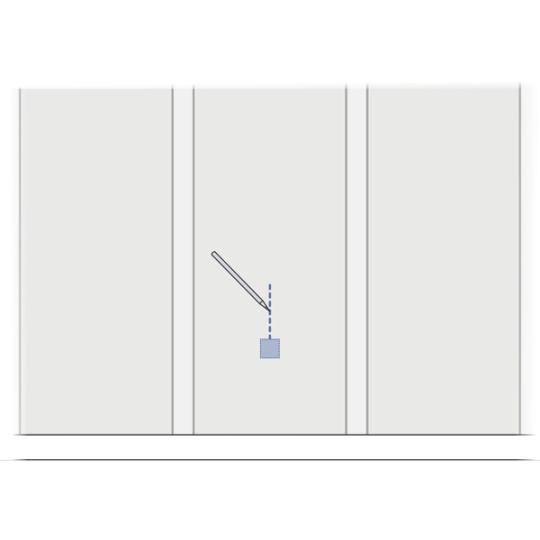
Choose a location for the SmartDoor™. It should be in a section of wall that is easily accessible by your pet and away from any electrical wiring or plumbing.
Use a stud finder to locate the wall studs in the area you have selected for the pet door. Using a pencil, draw a vertical line midway between the studs, 10 to 12 inches (25.4 to 30.5 cm) above the floor.
Cut a small hole in the wall and look inside to verify there is no wiring or plumbing present.
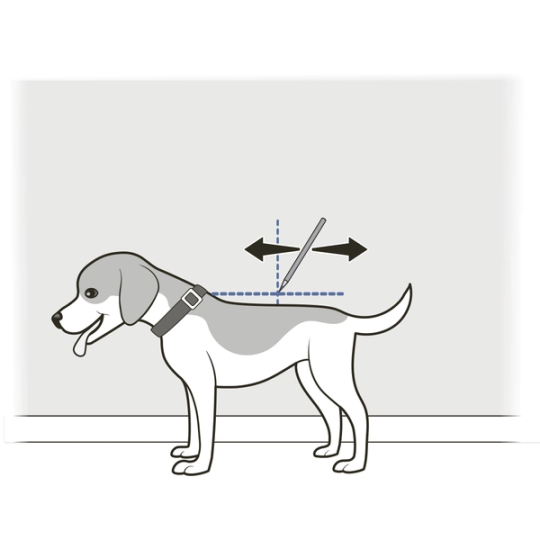
Measure your pet’s shoulder height when standing. Make a note of this measurement.
If you have more than one pet, measure the tallest one.
Make a pencil mark at your pet’s shoulder height on the vertical line. Using a level, extend the horizontal and vertical lines several inches in both directions.
This will help you place the cutting template correctly. The pet door must be installed level to work properly.
Make a second pencil mark on your wall, 3 ½ inches above the floor.
Position the Cutting Template
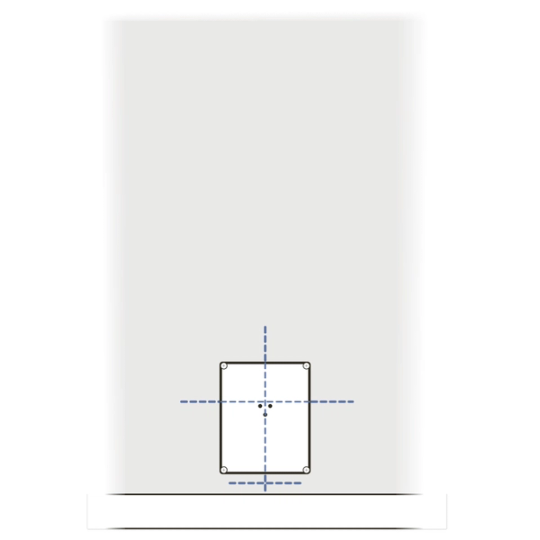
Cut out the cutting template for wall installation.
Hold the cutting template up to the interior side of the wall, matching the shoulder and center lines on the cutting template with the shoulder and center lines you drew on the wall.
Note where the bottom of the cutting template is and make any necessary adjustments:
- The bottom of the cutting template must be at or above the line you drew 3 ½ inches above the floor. (This is to allow room for the installation adaptor.)
- If you have both large and small pets, make sure your shorter pets will be able to step up over the bottom edge of the pet door.

Once you are satisfied with the placement of the cutting template, tape it to the wall.
Use a long drill bit to drill three holes through the center locator holes on the cutting template and all the way through the interior and exterior surfaces of the wall. Use both hands to hold the drill steady, straight and level.
You will use these holes to align the cutting template on the exterior side of the wall.
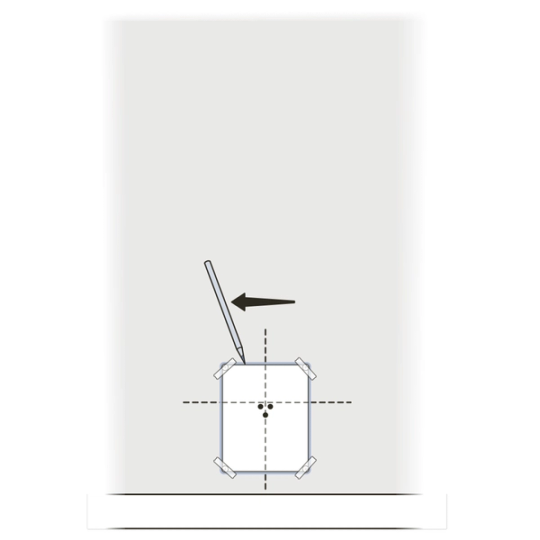
Trace the outside edge of the cutting template. Remember to connect the corners.
Make sure the cutting line is clearly marked on the wall, and then carefully remove the cutting template and excess tape.
Save the cutting template; you will need it for the exterior side of the wall.
Cut the Opening
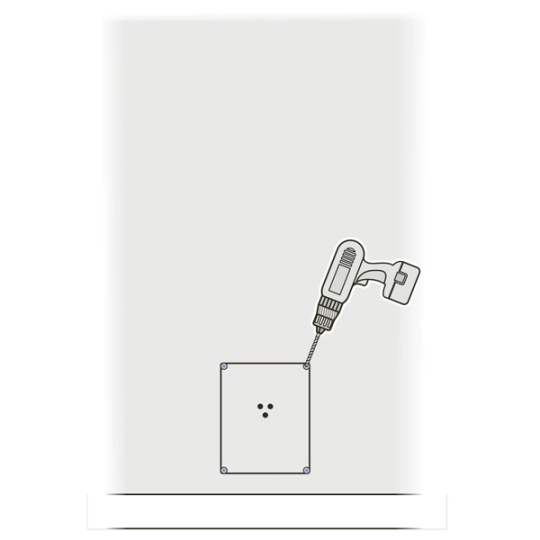
Drill 1/2-inch (12 mm) holes through the interior wall, just inside the corners of the cutting line.
These holes will be the pilot holes for the jigsaw blade.
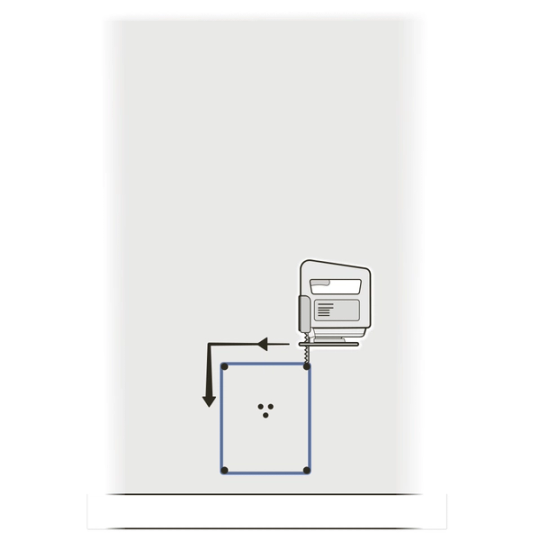
Using a jigsaw, cut the interior wall between the holes you just drilled, along the cutting line.
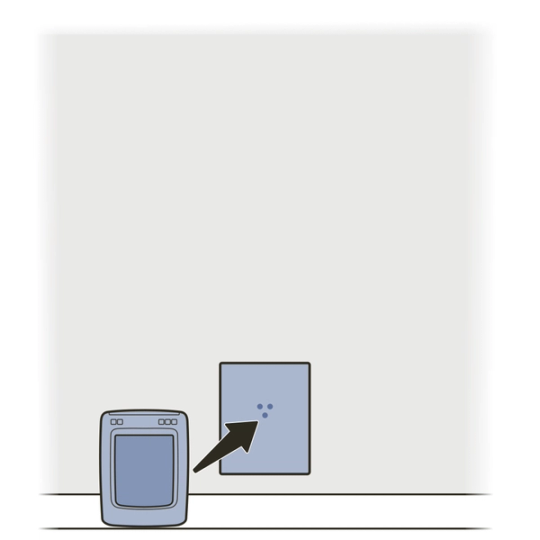
Insert the interior frame of the pet door into the opening to check the fit.
Do not force the interior frame into the opening if it is too tight. If the opening is too small, remove the interior frame and recut or file the opening slightly to enlarge it.
Once the interior frame fits into the opening, make any necessary adjustments to the opening to ensure the pet door sits level.

You are now ready to work from the exterior wall. Line up the three holes in the cutting template with the three holes you drilled through the wall. Make sure the cutting template is level and then tape it into position.
Use a pencil to trace the outside edge of the cutting template. Remember to connect the corners.
Make sure the cutting line is clearly marked on the wall, and then carefully remove the cutting template and excess tape.
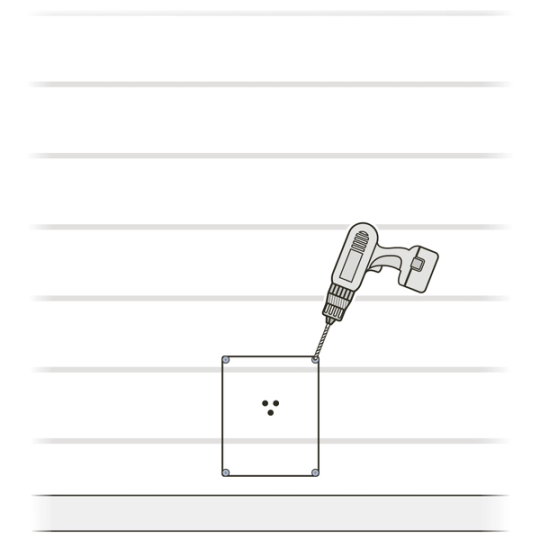
Drill 1/2-inch (12 mm) holes through the exterior wall, just inside the corners of the cutting line.
These holes will be the pilot holes for the jigsaw blade.
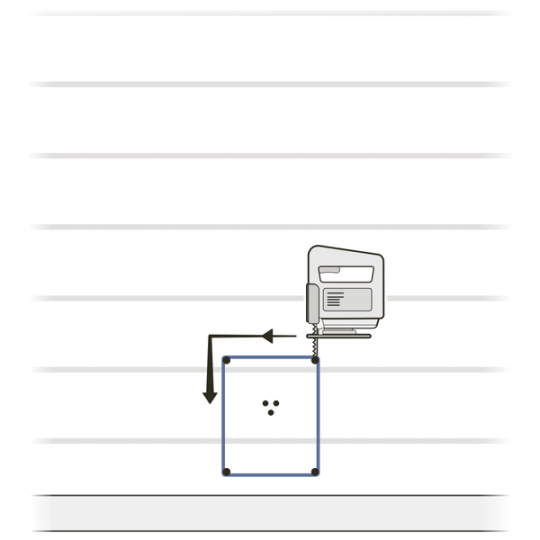
Using a jigsaw, cut the exterior wall between the holes you just drilled, along the cutting line.
Important: If the exterior wall has vinyl siding, carefully score and cut the siding before cutting through the wood behind it
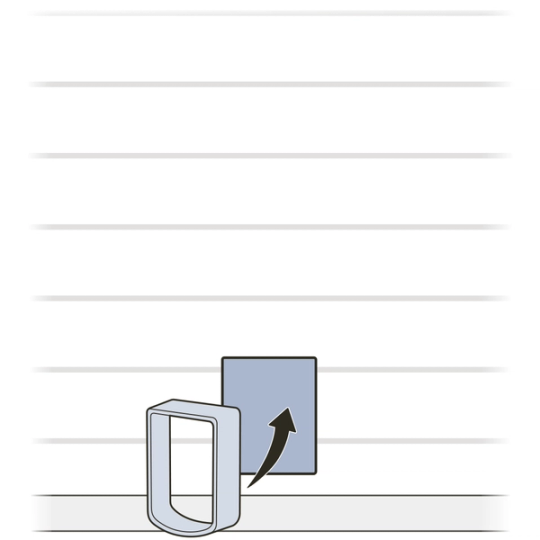
Insert a tunnel extension into the opening to check the fit.
Do not force the tunnel extension into the opening if it is too tight. If the opening is too small, remove the tunnel extension and re-cut or file the opening slightly to enlarge it.
Once the tunnel extension fits into the opening, make any necessary adjustments to the opening to ensure the tunnel extension sits level.
Prepare the Interior Frame
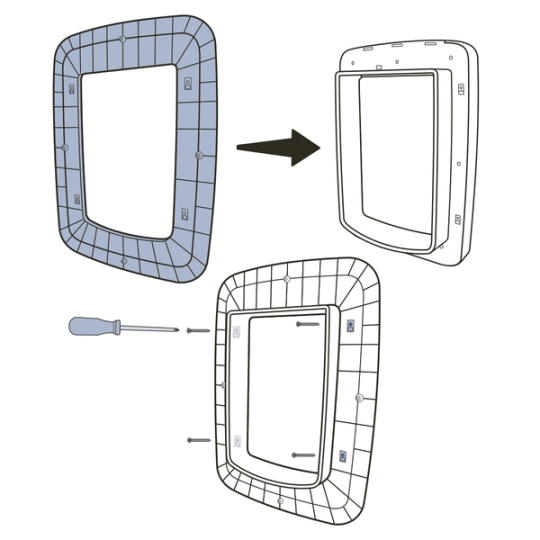
Fit an installation adaptor over the tunnel of the interior frame. The smooth side of the installation adaptor should face the front.
Use four short screws to secure the installation adaptor to the back of the interior frame.

Connect a tunnel extension to the pet door by fitting the lip of the tunnel extension over the tunnel of the pet door.
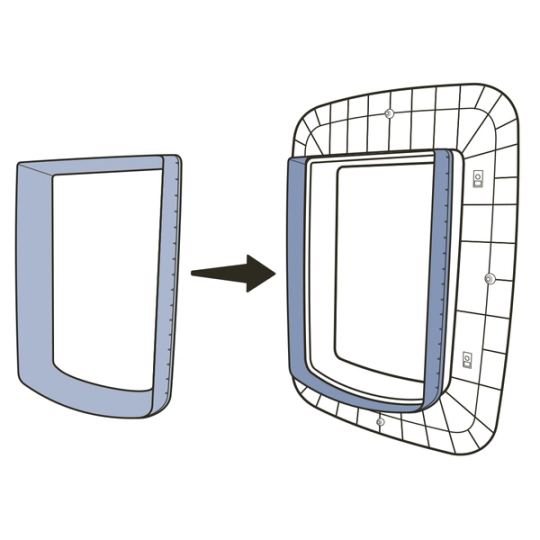
Connect additional tunnel extensions as needed.
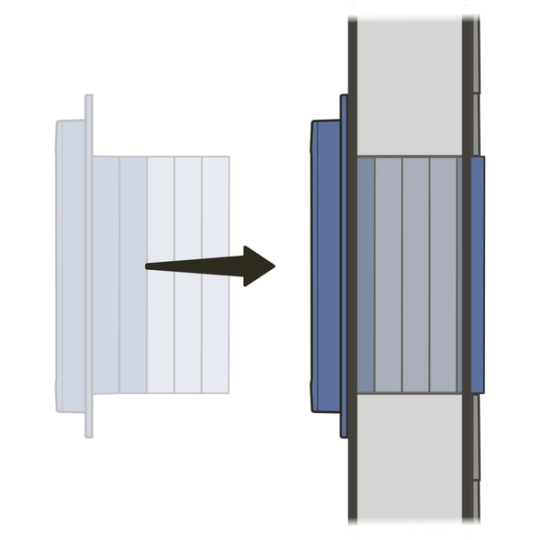
Test fit the interior frame (with installation adaptor and tunnel extensions attached) in the opening. The last tunnel extension needs to protrude from the wall by at least 1 1/4 inches (33 mm).

Once you are satisfied that you have connected the appropriate number of tunnel extensions, remove the tunnel extensions from the pet door and use permanent glue to attach the tunnel extensions to one another.
Attach the tunnel extensions to the interior frame using all-weather tape. Do not glue the tunnel extensions to the interior frame.
Install the Interior Frame
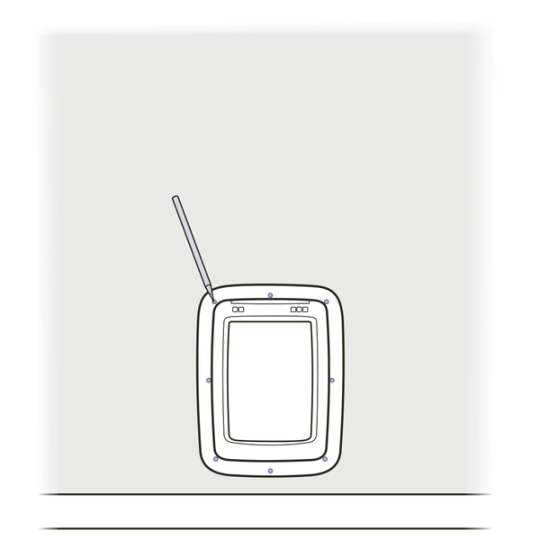
Insert the interior pet door assembly (interior frame with attached installation adaptor and tunnel extensions) into the opening in the interior wall.
Hold the interior pet door assembly in place and use a pencil to mark the location of the holes for the screws.
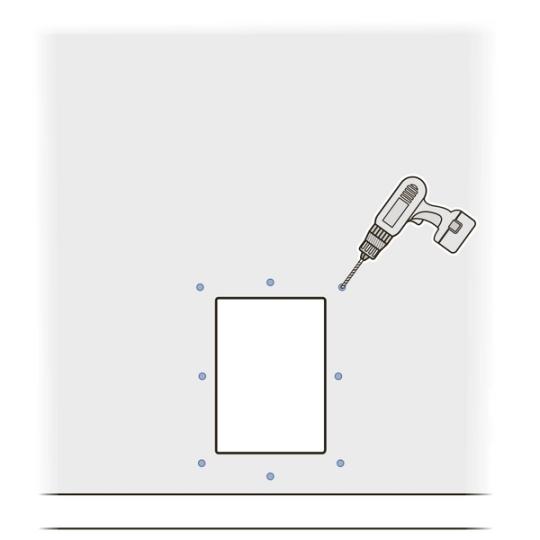
Remove the interior pet door assembly. Drill holes in the marked locations, making sure the holes are the appropriate size for the hardware you selected based on your wall construction.
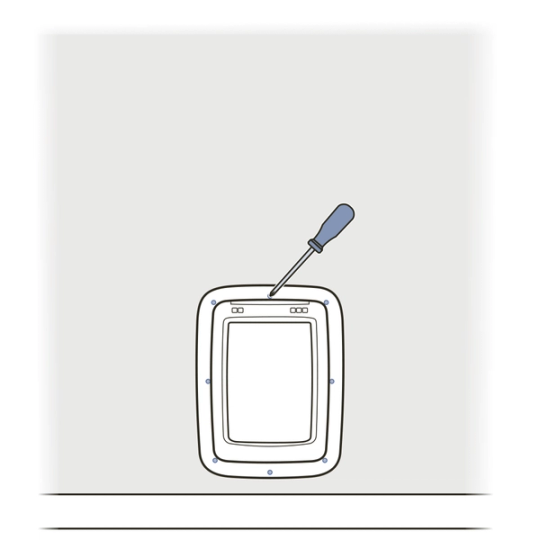
Replace the interior pet door assembly in the opening and secure it to the wall with appropriate hardware for your construction (not included).
Prepare the Exterior Frame
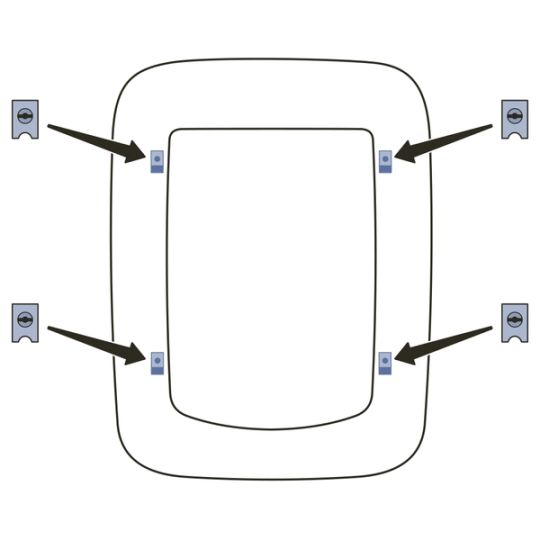
Place the second installation adaptor on a flat surface, smooth side up. Install a spire clip in each of the four rectangular holes in the installation adaptor. (The spire clips were provided with the installation adaptors.)
The flat side of the spire clip should face the front, and the round hole in the spire clip should line up with the round hole in the installation adaptor.
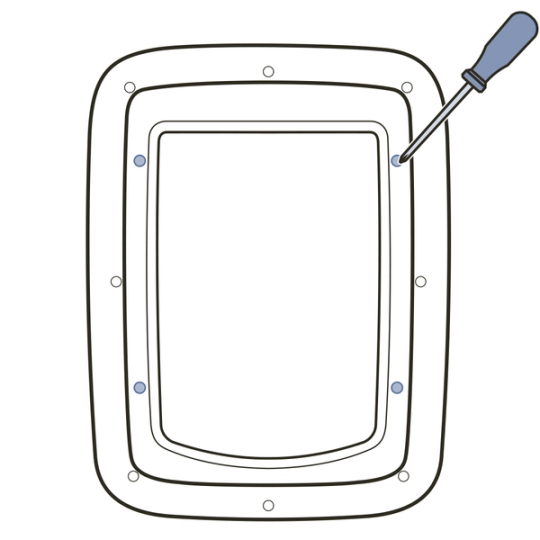
Place the exterior frame of the pet door on top of the installation adaptor. Use four short screws to secure the exterior frame to the installation adaptor.
Install the Exterior Frame
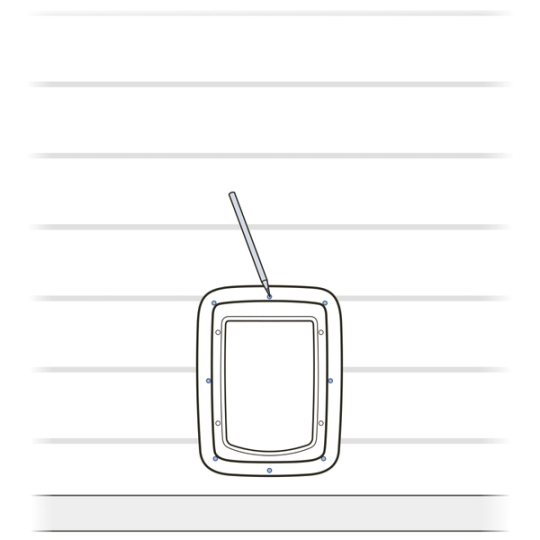
On the exterior side of the wall, line up the exterior pet door assembly (exterior frame with attached installation adaptor) with the tunnel of the pet door.
Hold the exterior pet door assembly in place and use a pencil to mark the location of the holes for the screws.
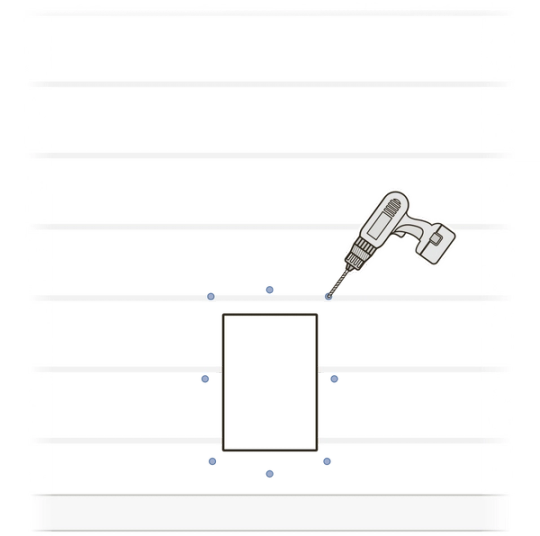
Remove the exterior pet door assembly. Drill holes in the marked locations, making sure the holes are the appropriate size for the hardware you selected based on your wall construction.
Important: If inserting screws through vinyl siding, first drill holes through the siding slightly larger than the screw heads. This will allow the screws to tighten flush with the wood and not buckle the vinyl siding.
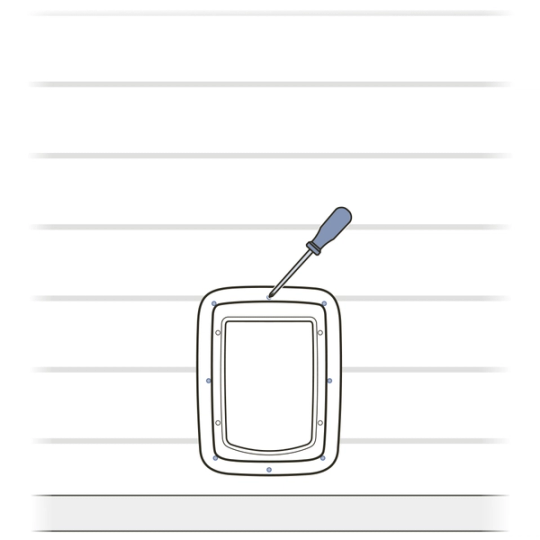
Replace the exterior pet door assembly and secure it to the exterior wall with appropriate hardware for your construction (not included).

On the exterior side of the wall, apply exterior-grade caulk around the edges of the installation adaptor and the exterior frame, making sure to leave the weep holes open.
If there are any gaps larger than 1/4 inch (6 mm), you will need to fill them with foam backer rod or other appropriate material before applying caulk.
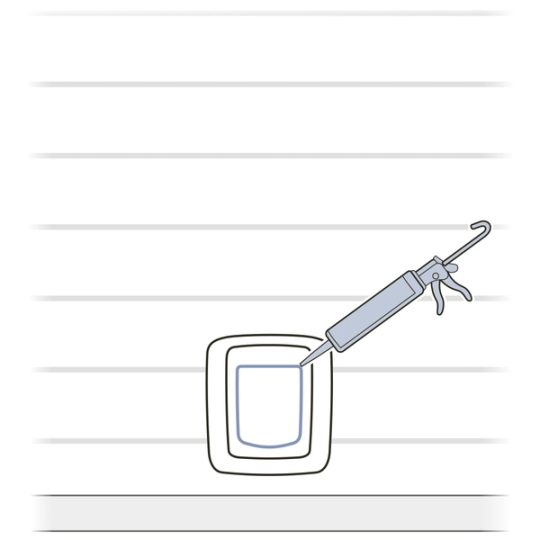
Apply exterior-grade caulk around the edge of the pet door tunnel where it meets the exterior frame.
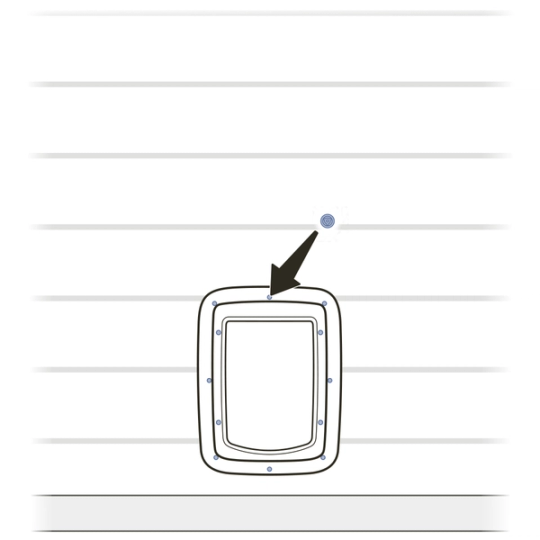
Insert blanking plugs into the holes in the exterior frame.
Insert blanking plugs into the holes in the installation adaptor.
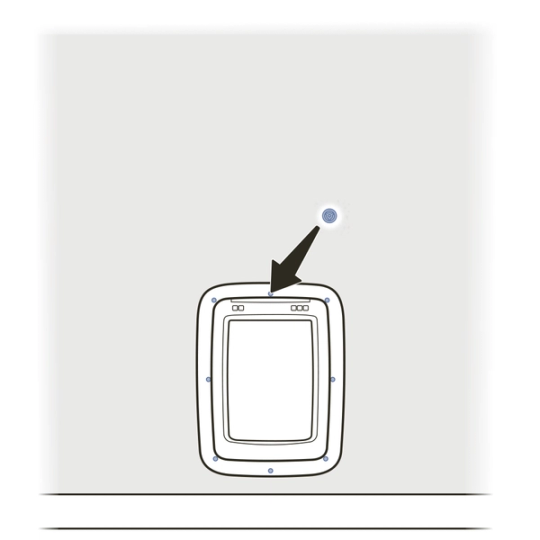
On the interior side of the wall, insert blanking plugs into the holes in the installation adaptor.
Reinstall the batteries in the pet door.
Now that your pet door is installed, it is time to train your pet to use it! See How to Train Your Pet to Use the SmartDoor™ Connected Pet Door.
Contact Customer Care
If you need further assistance, please contact our customer care team.